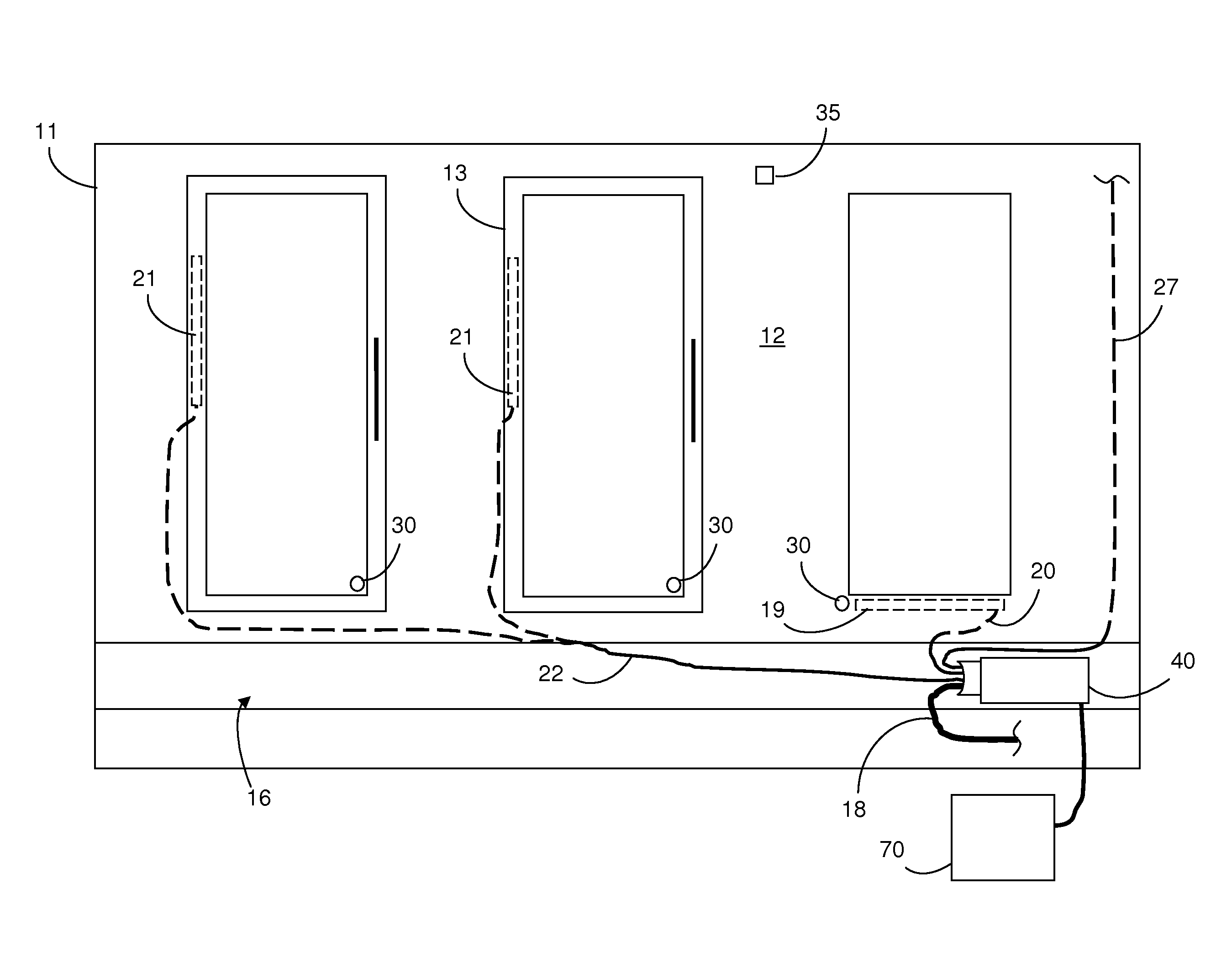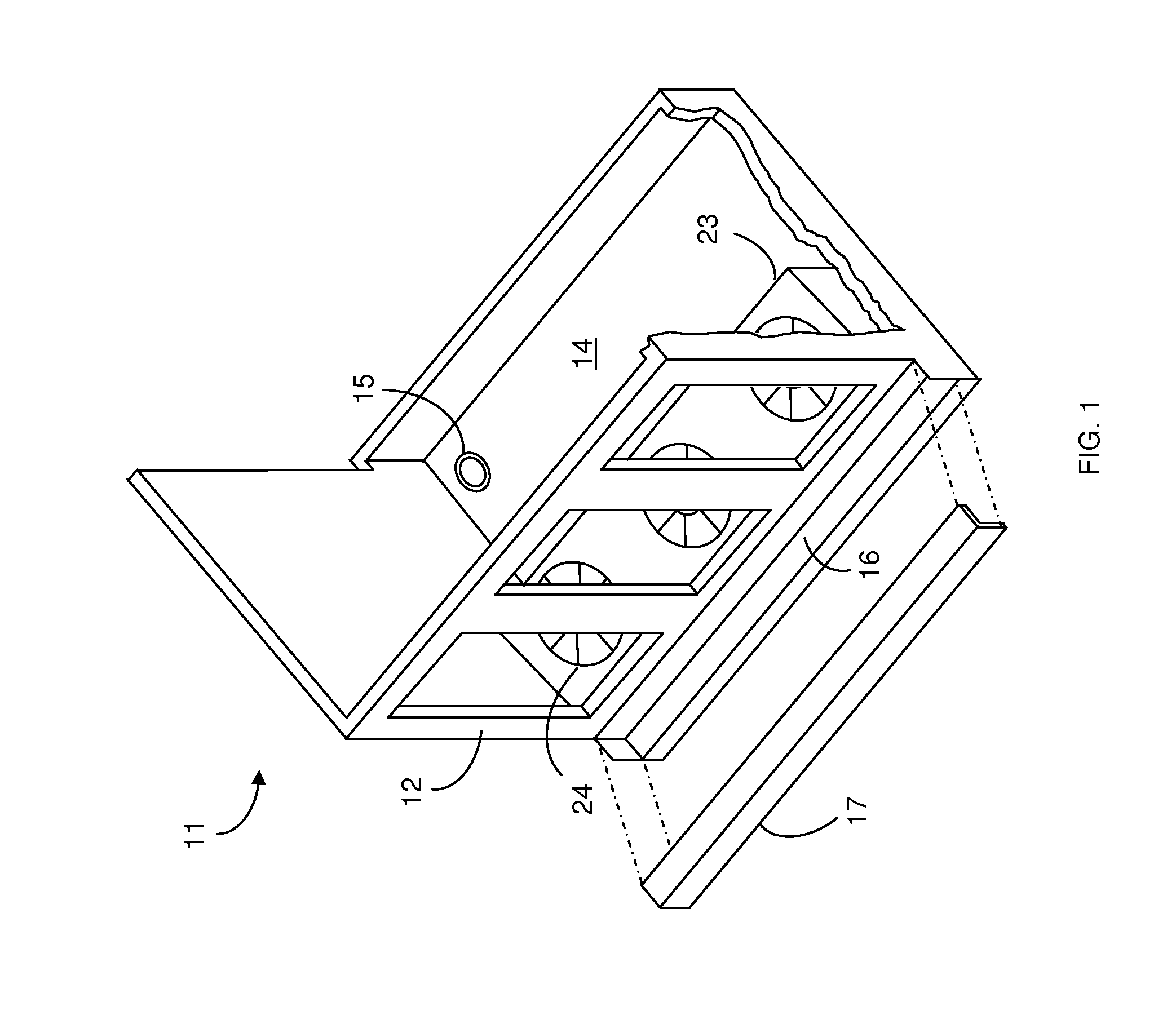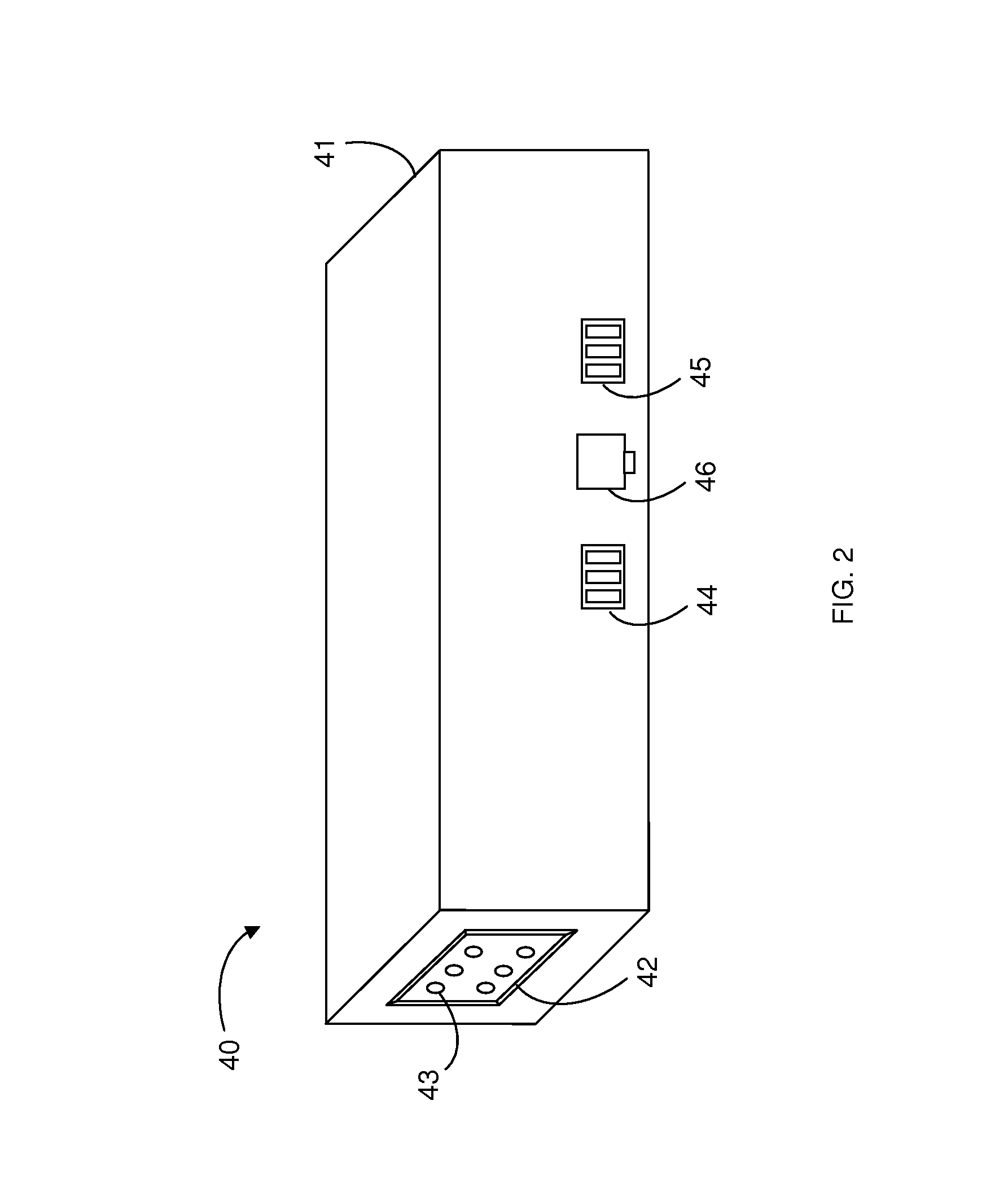System for preventing condensation on refrigerator doors and frames
- Summary
- Abstract
- Description
- Claims
- Application Information
AI Technical Summary
Benefits of technology
Problems solved by technology
Method used
Image
Examples
Embodiment Construction
[0021]Referring to FIGS. 1-4, a refrigerator control and monitoring system is used to manage energy consumption and prevent condensation on the doors 13 and frame 12 of a refrigerator 11. The system comprises a control unit 40 that receives input from one or more sensors and uses the input to manage the refrigerator 11. The control unit 40 controls the operation of the refrigerator's 11 frame heaters 19, which contact the frame 12, and door heaters 21, which contact the door's 13 frame or glass, by supplying or denying power to the heaters 19, 21. The control unit 40 may further control the operation of refrigerator 11 fans 24 and lights (not pictured). The control unit 40 may transmit collected sensor data to a central monitoring station, such as a computer 70 or a separate command unit 71 as described below. In the preferred embodiment, the system includes one control unit 40 for each refrigerator 11 in a store or other location. Each control unit 40 is located apart from the heat...
PUM
 Login to view more
Login to view more Abstract
Description
Claims
Application Information
 Login to view more
Login to view more - R&D Engineer
- R&D Manager
- IP Professional
- Industry Leading Data Capabilities
- Powerful AI technology
- Patent DNA Extraction
Browse by: Latest US Patents, China's latest patents, Technical Efficacy Thesaurus, Application Domain, Technology Topic.
© 2024 PatSnap. All rights reserved.Legal|Privacy policy|Modern Slavery Act Transparency Statement|Sitemap



